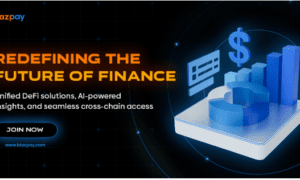As organizations race to modernize through digital transformation, cloud computing has emerged as the backbone of innovation, agility, and scale. But along with its benefits, the cloud also brings a new breed of risk—dynamic, borderless, and regulatory-heavy. In this evolving context, Enterprise Risk Management (ERM) has transitioned from a back-office function to a strategic imperative, especially in the realm of global cloud compliance.
Gokul Upadhyay, Senior Security Engineer – Global Cloud Compliance at Cisco examines how ERM must evolve in the age of cloud computing, and how businesses can structure their risk frameworks to effectively respond to international compliance challenges, cyber threats, and stakeholder expectations.

Gokul Upadhyay
The Convergence of ERM and Compliance
The global shift to the cloud has outpaced the development of uniform regulatory frameworks. Organizations are increasingly dealing with a patchwork of laws, standards, and jurisdictional policies—think GDPR in Europe, CCPA in California, PDPA in Singapore, PIPEDA in Canada, and industry-specific mandates like HIPAA or FINRA.
Each framework has its own nuances around data sovereignty, breach notifications, consent mechanisms, and third-party risk obligations. Navigating these obligations manually or ad hoc is no longer feasible. This is where a robust ERM strategy tailored for the cloud becomes indispensable.
Expanding the Scope of ERM
Traditionally, ERM focused on operational, financial, or strategic risks. But the cloud era demands a broader lens:
- Digital Risk: From service outages and misconfigurations to data exfiltration, digital transformation brings new attack surfaces.
- Compliance Risk: A misalignment with regional cloud compliance laws can lead to regulatory fines, legal disputes, and reputational damage.
- Reputational Risk: In a hyperconnected world, a single breach—especially if mishandled—can go viral within minutes, undermining customer trust.
- Vendor & Third-Party Risk: With multi-cloud and SaaS models, risk is no longer confined to internal systems. Assessing the security posture and compliance of third parties is a new core function of ERM.
From Reactive to Proactive: How ERM Can Lead
Organizations that view ERM as a compliance checkbox are already behind. Leading firms are embedding ERM directly into cloud strategy, allowing risk teams to participate in architecture design, vendor selection, and governance processes.
Here’s how modern ERM practices are shaping cloud compliance outcomes:
1. Risk-First Cloud Architectures
ERM helps organizations adopt “secure-by-design” principles—architecting cloud systems with compliance, identity, and data residency in mind from day one. Tools like AWS Well-Architected Framework or Azure Blueprints offer baseline compliance templates, but it’s ERM that ensures these align with real-world threats and obligations.
2. Real-Time Risk Dashboards
Instead of relying on static audits, companies are building real-time risk monitoring systems that integrate with cloud platforms, IAM systems, and SIEM tools. ERM teams then use these insights to continuously assess exposure levels and track compliance KPIs across geographies.
3. Risk Modeling for Regulatory Planning
As part of strategic planning, risk officers are now modeling regulatory impacts of entering new cloud regions or launching data-intensive products. These simulations help preemptively identify controls needed to meet local privacy laws.
Leveraging Technology for Risk Management
The scale of cloud data and the velocity of compliance changes have made manual risk management obsolete. Successful ERM today leverages:
- Automated Risk Assessments: Tools that periodically scan cloud configurations and flag violations based on compliance templates (e.g., SOC 2, ISO 27001).
- AI-Powered Anomaly Detection: Machine learning models trained to detect insider threats, policy violations, or suspicious user behavior in cloud environments.
- Integrated GRC Platforms: Solutions that unify Governance, Risk, and Compliance workflows with API connections to major cloud providers for real-time control verification.
Lessons from the Field: Risk Leaders Are Becoming Business Enablers
The shift to a risk-as-a-business-enabler mindset is exemplified by forward-thinking companies. Take financial institutions that used to be reluctant to move core functions to the cloud. Through ERM-led due diligence and control mapping, many have now securely migrated workloads while maintaining compliance with Basel II/III and local central bank guidelines.
Similarly, global SaaS firms are mapping out data residency strategies proactively, allowing for seamless compliance with regional laws while accelerating go-to-market timelines.
Navigating the Future: Strategic ERM Priorities
To future-proof risk management and cloud compliance, ERM programs must focus on:
1) Dynamic Regulatory Intelligence: Use AI-driven regulatory monitoring tools to stay ahead of law changes globally.
2) Scenario Planning: Model cross-border data transfers, supply chain disruptions, or service outages to understand operational impacts.
3) Third-Party Lifecycle Management: Treat vendors as extensions of your organization’s risk surface, with continuous monitoring and contract clauses that enforce compliance.
4) Cloud Exit & Portability Planning: Build cloud exit strategies to manage the risk of vendor lock-in, insolvency, or geopolitical conflict.
Final Thoughts
Cloud-first doesn’t mean compliance-second. In fact, the opposite is true—successful digital transformation demands compliance by design, and that requires an ERM program that’s cloud-aware, tech-empowered, and globally informed.
As the pace of technological change accelerates and the regulatory environment grows more fragmented, ERM stands out as the connective tissue linking innovation to accountability. Organizations that embrace this mindset won’t just reduce risk—they’ll unlock a competitive edge in a trust-first, compliance-driven world.


































